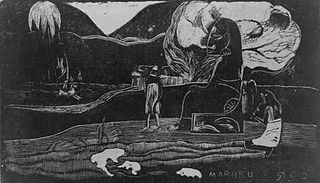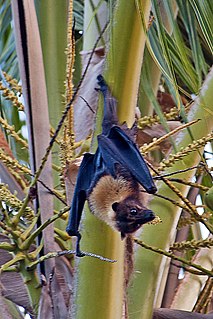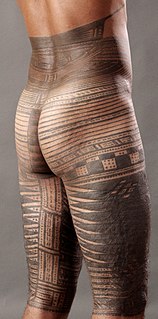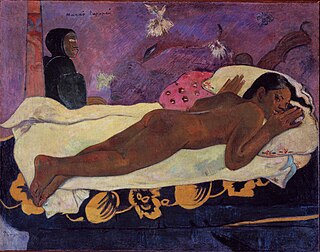Related Research Articles

A goddess is a female deity. In many known cultures, goddesses are often linked with literal or metaphorical pregnancy or imagined feminine roles associated with how women and girls are perceived or expected to behave. This includes themes of spinning, weaving, beauty, love, sexuality, motherhood, domesticity, creativity, and fertility. Many major goddesses are also associated with magic, war, strategy, hunting, farming, wisdom, fate, earth, sky, power, laws, justice, and more. Some themes, such as discord or disease, which are considered negative within their cultural contexts also are found associated with some goddesses. There are as many differently described and understood goddesses as there are male, shapeshifting, or neuter gods.

Aztec mythology is the body or collection of myths of the Aztec civilization of Central Mexico. The Aztecs were Nahuatl-speaking groups living in central Mexico and much of their mythology is similar to that of other Mesoamerican cultures. According to legend, the various groups who were to become the Aztecs arrived from the north into the Anahuac valley around Lake Texcoco. The location of this valley and lake of destination is clear – it is the heart of modern Mexico City – but little can be known with certainty about the origin of the Aztec. There are different accounts of their origin. In the myth the ancestors of the Mexica/Aztec came from a place in the north called Aztlan, the last of seven nahuatlacas to make the journey southward, hence their name "Azteca." Other accounts cite their origin in Chicomoztoc, "the place of the seven caves," or at Tamoanchan.

Hina is the name assigned to a number of Polynesian deities. The name Hina usually relates to a powerful female force who has dominion over a specific entity. Some variations of the name Hina include Sina, Hanaiakamalama, and Ina. Even within a single culture, Hina could refer to multiple goddesses and the distinction between the different identities are not always clear. In Hawaiian mythology, the name is usually paired with words which explain or identify the goddess and her power such as Hina-puku-iʻa (Hina-gathering-seafood) the goddess of fishermen, and Hina-ʻopu-hala-koʻa who gave birth to all reef life.
Samoan culture tells stories of many different deities. There were deities of the forest, the seas, rain, harvest, villages, and war. There were two types of deities, atua, who had non-human origins, and aitu, who were of human origin.

In Hawaiian religion, Pele is the goddess of volcanoes and fire and the creator of the Hawaiian Islands. Often referred to as "Madame Pele" or "Tūtū Pele" as a sign of respect, she is a well-known deity within Hawaiian mythology and is notable for her contemporary presence and cultural influence as an enduring figure from ancient Hawaii. Epithets of the goddess include Pele-honua-mea and Ka wahine ʻai honua.

Savaiʻi is the largest and highest island both in Samoa and in the Samoan Islands chain. The island is also the sixth largest in Polynesia, behind the three main islands of New Zealand and the Hawaiian Islands of Hawaii and Maui.

Falealupo is a village in Samoa situated at the west end of Savai'i island 20 miles (32 km) from the International Date Line used until 29 December 2011. The village has two main settlements, Falealupo-Uta, situated inland by the main island highway and Falealupo-Tai, situated by the sea. The road to the coastal settlement is about 9 km, most of it unsealed, from the main highway. The village's population is 545.

Samoans or Samoan people are the indigenous Polynesian people of the Samoan Islands, an archipelago in Polynesia, who speak the Samoan language. The group's home islands are politically and geographically divided between the Independent State of Samoa and American Samoa, an unincorporated territory of the United States of America. Though divided by national border, the culture and language are the same.

Nafanua was a historical ali'i (chief/queen) and toa (warrior) of Samoa from the Sā Tonumaipe'ā clan, who took four pāpā (district) titles, the leading ali'i titles of Samoa. After her death she became a goddess in Polynesian religion.
Micronesian mythology comprises the traditional belief systems of the people of Micronesia. There is no single belief system in the islands of Micronesia, as each island region has its own mythological beings.

The Samoa flying fox or Samoan flying fox is a species of flying fox in the family Pteropodidae. It is found in American Samoa, Fiji, and Samoa. Its natural habitat is subtropical or tropical dry forests. It is threatened by habitat loss.
According to a legend in Samoan mythology Tilafaiga was one of the twin sisters who brought the art of tatau to Samoa from Fitiuta in Manu’a. Tilafaiga's twin sister's name is Taema.
Saveasiʻuleo is the God of Pulotu the underworld of spirits or Hades in Samoan mythology.

The Peʻa is the popular name of the traditional male tatau (tattoo) of Samoa, also known as the malofie. It covers the body from the middle of the back to the knees, and consists of heavy black lines, arrows, and dots.

Su'a Sulu'ape Paulo II was a tufuga ta tatau born in Matafa'a near Lefaga, Samoa but based in New Zealand since the 1970s. He was born into one of the leading families of tattooists tufuga ta tatau in Samoa. The tattooists in these families, are loosely organized in a guild like system of master and apprentices. In the late 20th and early 21st centuries tufuga ta tatau were known internationally for their culturally distinctive and highly skilled work. The word tattoo is believed to have originated from the word tatau. In Samoan mythology the origin of the tatau is told in a legend about two sisters, Tilafaiga and Taema who brought the tools and knowledge of tattooing to Samoa. The Samoan male tattoo (tatau) is the pe'a. The female tatau is the malu.

There was widespread belief in ghosts in Polynesian culture, some of which persists today. After death, a person's ghost would normally travel to the sky world or the underworld, but some could stay on earth. In many Polynesian legends, ghosts were often involved in the affairs of the living. Ghosts might also cause sickness or even invade the body of ordinary people, to be driven out through strong medicines.
Sa'ilele is a village on the north shore in the Eastern District of Tutuila Island in American Samoa. It is reached from a cross-island road which leads north from the village of Faga'itua. By turning off at the pass, the turn-off takes you down a narrow road through dense forest to Sa'ilele. The village is known for having some of Tutuila's best swimming beaches. The sandy area below the rock outcrops at the western end of the beach is also a popular site for picnics. On a track east of the village is a burial ground where some ali'i were buried.

Veiqia, or Weniqia, is a female tattooing practice from Fiji. Young women received veiqia at puberty, often as part of a lengthy process. The tattoos were applied by older specialist women known as daubati. Natural materials were used for the inks and to make the tools, some of which were reserved for use on high status women. The practice was prohibited under British colonial rule in the nineteenth century, but has undergone revival in the twenty-first century, led by the work of The Veiqia Project. Whilst there is an important archive of veiqia research at the Fiji Museum, western museum collections hold more artefacts relating to the practice.
References
- ↑ , Samoa, A Hundred Years Ago and Long Before by George Turner, ISO-8859-1
- ↑ "The Project Gutenberg eBook of Samoa, by George Turner". www.gutenberg.org.
- ↑ Dictionary of Polynesian mythology by Robert D. Craig, p. 248
